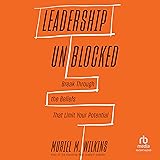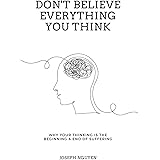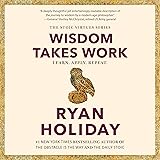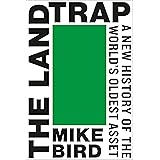The allure of **gold** has captivated investors for centuries, consistently serving as a perceived safe haven asset. In recent times, the precious metal has experienced a significant surge, leading many to question if this rally can endure or if it is merely a temporary phenomenon. As discussed in the accompanying Reuters video featuring Cinthia Murphy, investment strategist at TMX VettaFi, understanding the multifaceted drivers behind gold’s ascent is crucial for any investor contemplating an entry into this dynamic market.
The current environment presents a unique blend of factors that contribute to gold’s appeal, creating both opportunities and considerations for investors. This article delves deeper into these aspects, exploring the underlying forces propelling **gold investing**, examining its future potential, and outlining diverse strategies for engaging with this valuable commodity.
Understanding the Forces Behind Gold’s Ascending Trend
The remarkable rally in **gold prices** is not attributable to a single cause but rather a convergence of influential economic and market conditions. These interconnected factors are driving substantial investor interest in the precious metal, moving it to multi-year highs.
The Insatiable Demand for Portfolio Diversification
A primary catalyst for the renewed interest in gold is the pervasive desire for diversification among investors. Many portfolios have become increasingly concentrated in large-cap stocks, raising concerns about potential over-reliance on a few dominant companies. In response, investors are actively seeking to spread their risk across various asset classes, a strategy from which gold significantly benefits.
Assets traditionally considered alternatives, such as commodities and even digital assets like Bitcoin, have seen increased capital inflows. As Cinthia Murphy highlighted, physical **gold ETFs** alone have attracted almost $30 billion this year, underscoring this widespread appetite for portfolio protection and balance.
Improving Opportunity Cost Amidst Rate Adjustments
Historically, gold is a non-yielding asset, meaning it does not generate income through interest or dividends, unlike bonds or dividend stocks. This characteristic often makes gold less attractive during periods of high interest rates, as investors can earn more from yielding assets. However, a significant shift is occurring in the economic landscape.
As the global economy anticipates a new rate-cutting cycle, the opportunity cost of holding gold diminishes. When interest rates decline, the comparative attractiveness of non-yielding assets like gold increases, making it a more compelling option relative to other investments whose yields are also falling. This structural strength provides a robust tailwind for **gold’s performance**.
Outlook: Can the Gold Rally Sustain Its Momentum?
With gold prices reaching elevated levels, a pertinent question for investors is whether this rally can be sustained or if a correction is imminent. The market presents a fascinating dichotomy of views, balancing the potential for profit-taking against optimistic long-term projections.
Navigating Profit-Taking and Year-End Rebalancing
As prices ascend, the natural tendency for some investors is to realize gains, leading to profit-taking. This phenomenon, coupled with typical year-end portfolio rebalancing activities, could introduce some downward pressure on gold prices in the short term. Such market adjustments are a normal part of asset cycles.
Lofty Projections from Major Financial Institutions
Conversely, leading financial firms such as JP Morgan and Goldman Sachs are issuing notably bullish forecasts for gold. Projections suggest that gold could reach $4,000 an ounce, with Goldman Sachs even positing a potential $5,000 an ounce if specific economic conditions, such as persistent concerns about GDP growth, inflation, and economic stability, align favorably. These projections indicate a belief in at least another 7-10% upside potential from current levels to meet these ambitious targets, suggesting that the rally in **gold investing** might still have room to run.
Diverse Strategies for Engaging with Gold
While the notion of owning physical gold is traditional, the modern investment landscape offers a variety of sophisticated avenues to gain exposure to this precious metal. These methods cater to different investor objectives, from seeking income to embracing higher-risk, higher-reward plays.
Income-Generating Gold ETFs
Addressing the traditional criticism that gold is a “sterile asset” without income, innovative **gold ETFs** have emerged. These funds utilize options strategies to generate income from gold positions, offering investors exposure to gold’s price movements while also providing regular distributions. For example, ETFs like Simplify YGLD or Neos IAUY can offer double-digit distribution rates, providing a unique proposition for income-focused investors.
Investing in Gold Mining Equities
Another distinct approach to gold investing involves allocating capital to gold mining companies. These are equity plays that offer exposure to the gold sector indirectly. While gold miners have quietly outperformed in the past year, their ETFs often lag behind the physical metal itself. This disconnect arises because miners are fundamentally equities, perceived as riskier and more volatile than the direct ownership of physical gold.
Despite this, many mining companies have significantly strengthened their balance sheets, enhancing operational efficiency and overall financial health. For investors comfortable with equity risk, these companies can offer substantial upside potential if gold prices continue to climb, especially given their improved fundamentals.
Multi-Asset Portfolios Featuring Gold
For those seeking comprehensive diversification, multi-asset **ETFs that combine gold** with other commodities or asset classes are available. These funds offer a pre-packaged approach to balanced exposure, leveraging gold’s safe-haven qualities alongside other growth or defensive assets. Such options simplify the process of incorporating gold into a broader, diversified portfolio strategy.
Is It Too Late to Invest in Gold?
A common concern among potential investors is whether the opportune moment to engage in **gold investing** has passed given its recent strength. However, the prevailing macro drivers suggest that gold’s upward trajectory may not be exhausted.
The underlying economic factors, such as potential interest rate reductions, ongoing concerns about job market stability, persistent inflation worries, and moderated GDP growth, remain firmly in place. These conditions typically bolster gold’s appeal as a hedge against economic uncertainty. While current projections do not indicate another 40% surge, there is still perceived upside room for gold prices if these macro-economic conditions persist. Therefore, for investors seeking portfolio resilience amidst these concerns, considering an allocation to gold may still be a prudent decision.
Gold Versus Bitcoin: A Comparison of Modern Havens
The discussion surrounding safe-haven assets frequently pits gold against Bitcoin, often referred to as the “digital” versus “physical” hedge. The debate over which is superior is robust, with differing schools of thought on their respective roles in an investment portfolio.
Bitcoin is largely still viewed by many as a risk asset rather than a pure safe haven, despite its growing adoption and institutional interest. Both gold and Bitcoin, however, are recognized for their powerful diversification benefits within alternative asset classes. For investors looking to embrace both, innovative products like the BTGD ETF offer integrated exposure, providing an equal allocation to both Bitcoin and gold for every dollar invested. This demonstrates that investors are not necessarily forced to choose between them; rather, clever strategies allow for simultaneous engagement with both digital and physical safe havens within a well-diversified **investment strategy**.











